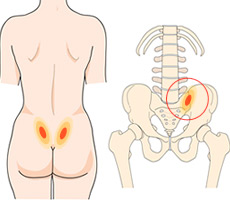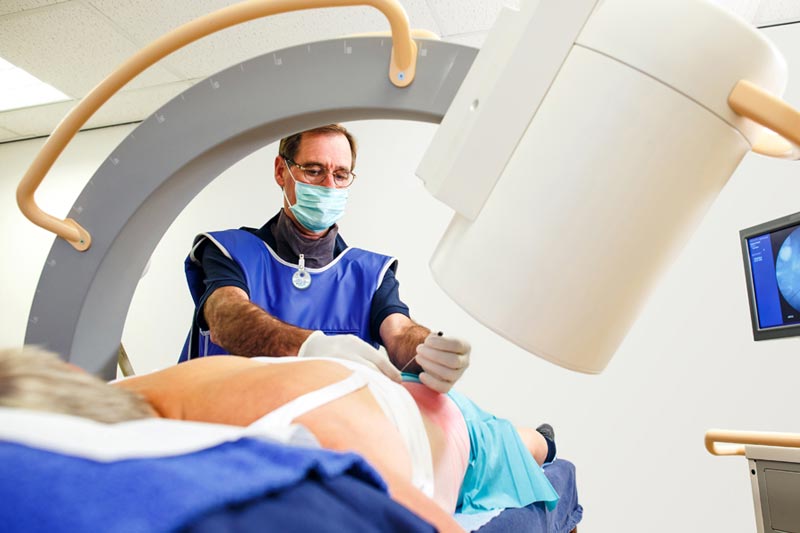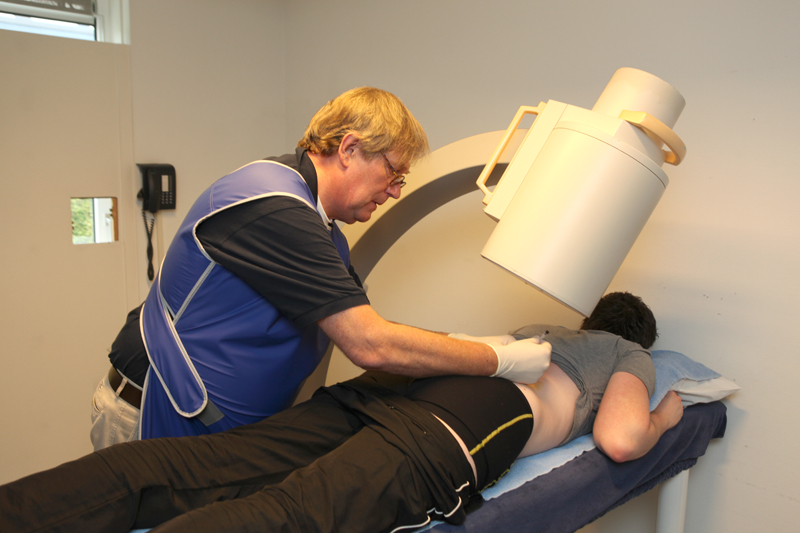SI Joints injection
You suffer with lower back pain. Examination has shown that an aggravated SI (sacroiliac) joint in the spinal column is the underlying cause. In order to relieve this pain your medical practitioner has proposed an injection into the SI joint. This page further outlines what this treatment entails.

Si-Joints
The sacroiliac joints (SI joints); also known as the sacrum joints, form the link between the sacrum and the pelvis, and as such between the back and legs. The joints are located in the lower back, on both sides of the spinal column. There is little movement in the joints, meaning the back and legs are firmly interlinked. SI joints can become overburdened or inflamed.
TREATMENT OBJECTIVE
Upon aggravation of the SI joint the medical practitioner can inject the joint. The treatment can have two objectives:
Diagnostic:
With the injection the medical practitioner wants to see whether the aggravated SI joint is the cause of your painful symptoms. The effect of the injection is temporary, which means that the injection temporarily eliminates the source of pain.
Therapeutic:
If it is clear that the painful symptoms derive from the joint, the medical practitioner can try to lessen these symptoms with an injection of corticosteroids. This will relieve the pain, which in turn will help you do the exercises necessary for improving the joint’s function.
Treatment
You lie on your front on the treatment table. First the medical practitioner will disinfect your skin where the injection will be administered. Under x-ray control the medical practitioner inserts a thin needle into the joint. Next they inject some contrast agent (Omnipaque) to see if the needle is positioned correctly in the joint. If the treatment is for diagnostic purposes only a local anaesthetic (Lidocaine 2%) is injected. If the treatment is for therapeutic purposes the medical practitioner will inject a mix of a local anaesthetic (Xylocaine 2%) and corticosteroids (Decadron 20 mg).
Treatment duration
The treatment takes around 15 minutes.
General information
For further information about potential side effects and risks, and for other instructions we kindly ask you to read through the “your visit” and “after your treatment” information provided to you.
 English (UK)
English (UK)  Nederlands (NL)
Nederlands (NL) 


